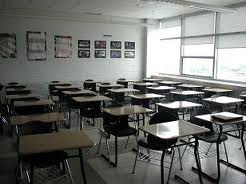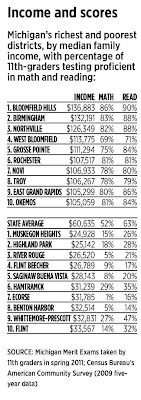
The following opinion is my own and not the opinion of anyone else affiliated with One Southwest Michigan, One Community:
The Michigan Department of Education recently released rankings of all schools in the State of Michigan, nearly 3,800 of them. School rankings sometimes reduce complex educational problems into overly simplified tables. Local newspapers have described the methodology behind the rankings as: "approved by the US Department of Education," not a very thorough explanation.
Similarly, Consumer Reports (CR) reviews and ranks the best and worst automobiles in the country. In order to prepare these rankings, CR performs their own thorough tests of vehicles as well as surveys thousands of vehicle owners throughout the country.
One way to think of the CR rankings is that they take a look at what auto companies do with the raw materials they are provided (i.e., steel, plastic, and rubber) and try to assess the quality of the finished product. The results can be surprising: The lowly and moderately priced Chevrolet Malibu is a much more highly rated vehicle than the over priced Cadillac Escalade, and for that matter higher rated than all other Cadillac models. Personally, I would rather drive a Chevy Malibu than a Cadillac, but I wonder if most Americans would feel the same way.
I would guess that most of the journalists doing the reporting on the recent release of the Michigan Department of Education rankings, and for that matter the readers of the articles, have no idea what criteria or methodology were used to rank the schools as the “best” or the “worst”.
Let me give you an example. Let's call it "A Tale of Two Schools."
East Grand Rapids, aka, Cadillac Escalade, and Hartford High School, aka, Chevrolet Malibu. East GR is one of the wealthiest communities in West Michigan. Lots of doctors, lawyers, and other professionals call East GR their home. There are lots of million dollar homes in East GR. Not so many in Hartford. Here is some data on the two schools:
% of Children Who are Poor (i.e., qualify for lunch program)
East G.R. = 9%
Hartford = 70%
% of Schools Which the School Outperforms
East G.R. = 62%
Hartford = 47%
+ Increase or - Decline in Performance from the District's Middle School
East G.R. = -33%
Hartford = +25%
East GR's middle school is in the top 5% of the state in academic performance. On top of that, all of East GR's elementary schools are in the top 10%, one of them Wealthy Elementary, is in the top 1%. 95% of the schools in the State have more poor children than East GR. So basically, East GR High School takes kids from lower grades who are in the top 10% of achievement in the state, living in one of the wealthiest suburban communities in the state (as measured by free/reduced lunch counts), with some of the best school facilities in the state on the banks of Reeds Lake where they win lots of state athletic championships, and turns them into average achievers at their high school so that their parents with all of their political connections can then spend lots of money to send them to the nation's Ivy league and other premier colleges.
Why is East GR High School not on the list of poorly performing schools? The “raw materials” they receive from lower grades tell me that they should be performing much better than they are.
On the other hand, Hartford High School in rural Michigan and one of the poorer communities in the state, takes kids from lower grades, who admittedly should be doing better, and turns them into students who achieve nearly as well as East Grand Rapids students: average for the state. And since Hartford parents don't have the resources and political connections of their Kent County counterparts, my guess is that Hartford kids go on to achieve excellence at schools that are not for U.S. News and World Reports Ivy League elite, i.e., schools like Western, Grand Valley, and Michigan State. And I would bet that right now Hartford teachers and administrators are working diligently to improve the educational opportunity for all kids, not just a rich elite few.
The moral of the story is that a good Chevy is always better than a crummy, over priced Cadillac.
My kudos to Hartford High School for achieving nearly as well as East GR with far fewer resources. Hartford High School far outperforms its peers in improving educational achievement for its students. You make all of us Chevy owners proud!
Finally, I wish journalists would dig a little deeper into a story about educational achievement to understand and explain how the rankings come about. The simple statement that it is a system of ranking “approved by the US Department of Education” is not a very thorough explanation.





















